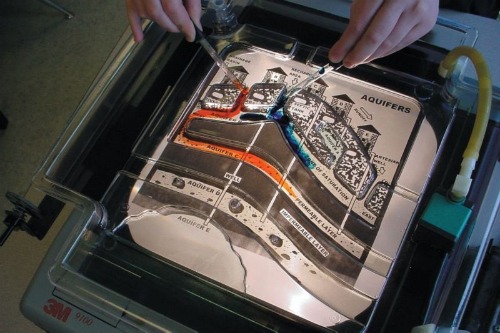![]() Earlier this week, I was incredibly humbled by the outpouring of geoblogospheric support for a DonorsChoose project to help South Carolina elementary school students become weather detectives. With only minutes to spare before the project lost its chance, with help from 13 donors, the last dollars were raised to get those students a thermometer, wind vane, rain gauge, weather maps, and weather related books and craft supplies that will really enrich their educational experience. The thank-you letter from the teacher brought tears to my eyes. Here it is:
Earlier this week, I was incredibly humbled by the outpouring of geoblogospheric support for a DonorsChoose project to help South Carolina elementary school students become weather detectives. With only minutes to spare before the project lost its chance, with help from 13 donors, the last dollars were raised to get those students a thermometer, wind vane, rain gauge, weather maps, and weather related books and craft supplies that will really enrich their educational experience. The thank-you letter from the teacher brought tears to my eyes. Here it is:
Thank you so much for generous gift. Without your donation, this unit would not be possible. My students will now have a chance to measure with these weather tools just like meteorologist do. The alternative would be to visit local websites and write the temperature, wind speed and direction, and rain fall amounts. Because of your generosity, my students are fortunate to now have a weather vane, anemometer, rain gauge, and thermometer. Now they can measure weather conditions, write the data in a table, and then interpret the data.
The craft materials allow my students to create models of the weather cycle and clouds. They can create booklets on severe weather, clouds, and weather tools, too.
I am also very excited about the new books about weather we will receive. Some of these books are just not available in the library. Now that we have the books for our class, I can read the books to the class, and the students can read them as individuals and take Accelerated Reader tests.
So much good will come from this project. Students will work with every modality, visual, kinesthetic, and auditory.
Again, thank you for your generous gift. Now my students can be true weather detectives!
With gratitude,
Mrs. P.
We did a good thing. Thanks to those who donated and those who spread the word. But there’s so much more to be done.
Weather is just one small part of the Earth system…maybe it’s time to turn our focus to another vital component…water.* There are two fantastic projects in our challenge that only have a few days left to meet their funding goals. Appropriately, one has to do with groundwater and the other has to do with surface water.
“Where does that water go?” needs just $50 to bring a groundwater flow table to students at a magnet school in Charlotte, North Carolina. The model would allow the teacher to “simulate many real-world groundwater concepts involving aquifers, sinkholes, caverns, geysers and hot springs” and offer “hands-on demonstrations allow the user to trace underground water patterns using colored dye.” Here’s what it looks like:

Groundwater flow table from Frey Scientific, as requested in the DonorsChoose project Where does that water go?
It’s a pretty cool little model that looks like it will do a great job of helping the students visualize where water goes when it sinks into the ground. Let’s help them get it with just $50 more in donations in the next 10 days. This is definitely a case where every $5 will make a big difference.
The surface water project that I’m championing is called “Clean It Up!” and involves high school students in Chicago. It’s a bit more of a challenge financially – needing $385 of our dollars in the next 10 days. But the note from the teacher is inspirational:
Think about the first time you learned of an issue you care passionately about. Perhaps it was climate change, the achievement gap, poverty, or war. These resources will allow my students to become captivated and inspired by the current situation of water pollution in Chicago. They will bring a real-world issue into the classroom, and allow them to discover a passion for solving the issues of waste-water in Chicago rivers.
Not only will they learn about what should and should not be in our rivers, lakes and ponds, but they will be able to test for it and analyze the political and social motivations that keep our waterways polluted.
Our project will include research on the history and current issues in Chicago, and require students to discover methods for cleaning up Chicago rivers. They will be required to present those findings to our local officials, moving from scientific investigation to civic engagement.
My 5th grade teacher once told me that you only get a few opportunities to become environmentally passionate. I am not simply requesting resources for a unit on water and soil, I am requesting an opportunity to inspire my students. An opportunity to allow them to fulfill their potential of being stewards for the environment.
What a great integrative experience for high school seniors. Let’s help them Clean it Up!
*Don’t worry, rocks are coming. And you all have been doing a great job of funding rock projects without too much need for cheer-leading on my part.



Links (1)-
Pingback: Stuff we linked to on Twitter last week | Highly Allochthonous